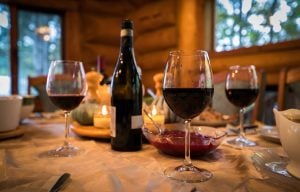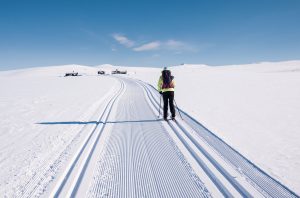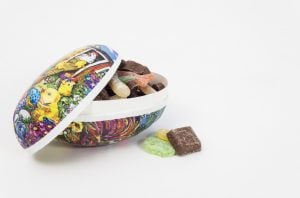Easter is one of the most important holidays in Norway. Despite being a very secular country, this holiday is an important part of Norwegian culture. Easter is a time for Norwegians to celebrate the last days of winter as well as the arrival of spring after a long period of cold and darkness. And celebrate, they do. Norway actually has the longest Easter holiday in the world! Norwegian shops and workplaces are closed over Maundy Thursday, Good Friday, Easter Sunday, and the Monday following Easter Sunday, Second Easter Day; schools are closed for the week leading up to Easter.

Stay in a cabin
Most Norwegians associate the Easter holiday with a trip to their cabins. During this time of year most people head to the mountains with their families for a week of relaxation and celebration. Going to a cabin is a favorite pastime for many Norwegians and many people own their own cabins. Although if you don’t have a family cabin, there are plenty to rent throughout the country as well. Cabin culture is a very important part of Norwegian culture as it allows families to escape the hustle and bustle of their everyday lives and get out into that gorgeous Norwegian nature and participate in the outdoor sport of the season: skiing, snowshoeing, hiking, climbing, swimming, kayaking, etc.

Go skiing
The outdoor sport of the Easter season is without a doubt, skiing! Before trading in skis for hiking boots, the Easter holiday presents itself as the last time to get in some good skiing before the endless days of summer are here. The country is filled with ample terrain suited for both cross-country and downhill adventures. Pack some oranges and Kvikk Lunsj (Norwegian chocolate bar) in your backpack and you’re all set. And for those Norwegians who perhaps prefer the summer season over winter, the Easter break provides a nice time to take their boats out on the water or sunbathe in that glorious and welcome sun that has now returned!

Read crime novels
Reading crime stories is a tradition unique to Norway during Easter. This tradition started in the early 1920s when two young men from Bergen decided to write a crime novel together. The two budding authors came up with an ingenious way to promote their book. They placed a front-page advertisement in the biggest national newspaper in Norway, Aftenposten. This ad was designed to look like an article with the headline the same as the book’s title: The Bergen Train Hijacked Last Night. The rest of the “article” told parts of the story without revealing it was fictional except for one small line that revealed the truth. Many readers fell for the stunt and Aftenposten was inundated with inquiries on whether or not loved ones were accounted for. This marketing campaign was launched the day before Palm Sunday to coincide with its plot which took place during Easter. This provided the perfect activity to do over the Easter break and thus a tradition was born. Every year leading up to Easter you’ll find crime novels on sale at the bookstores, small mysteries printed on milk cartons, and crime shows featured on television.

Eat, drink, and be merry
Months before Easter, Easter candy shows up in the shops along with beautifully decorated cardboard eggs in which to put all of the Easter goodies. Local grocery stores have discount wars on Easter candy trying to outdo one another and lure customers in. Marzipan is an incredibly popular Easter treat as well as oranges and the beloved Kvikk Lunsj candy bar (synonymous with Easter and being out on tur). Traditionally the main Easter meal consists of rakfisk (fermented trout), or lamb and vegetables. Eggs along with freshly baked goods are often the stars of Easter brunch. These bountiful feasts are often enjoyed around a table adorned with yellow candles and linens, the symbolic color of Easter in Norway.
We hope that you have a wonderful spring vacation this week, wherever you are. Happy Easter or God Påske!
